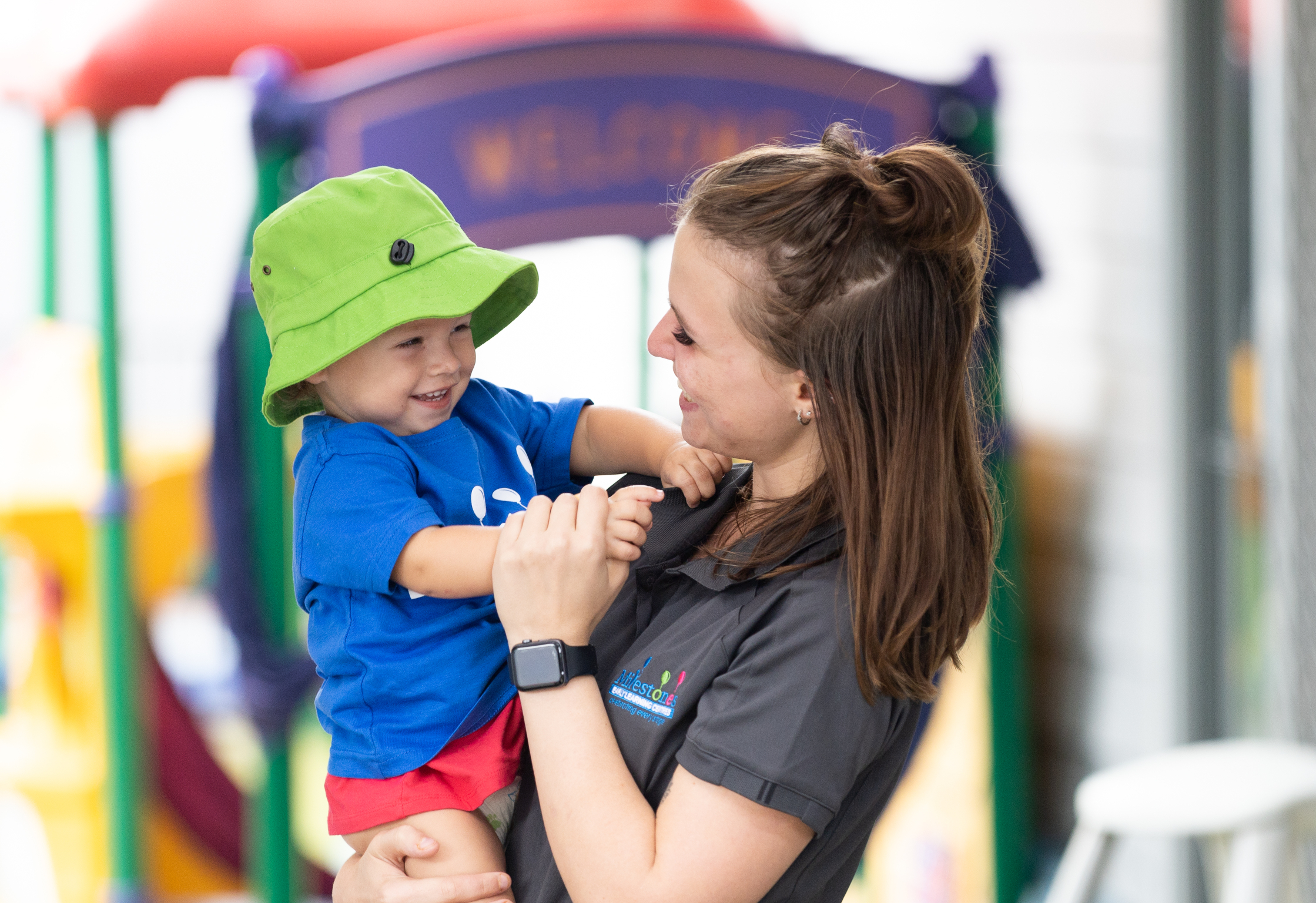
Post updated August 2025.
Toilet training is a milestone in every toddler’s journey, and often just as big for parents! At Milestones Early Learning, we know it can feel overwhelming at first. With the right support, patience, and encouragement, this stage can become a positive and confidence-building experience for your child.
Whether your toddler is showing early signs of readiness or you’re already giving it a go, our educators are here to guide you step-by-step.
How Do I Know If My Child Is Ready for Toilet Training?
There’s no set age when toilet training “should” begin. Some children are ready at two, others closer to three or beyond. What matters most is recognising the developmental cues that signal readiness.
Signs to look for include:
- Staying dry for longer stretches during the day
- Showing curiosity about the bathroom and flushing the toilet
- Using words or gestures to indicate they need to go
- Disliking wet or dirty nappies
- Pulling pants up or down with minimal help
- Following simple directions such as “Let’s sit on the toilet!”
Educator insight:
“Toddlers often show us they’re ready by wanting to remove their own nappy, talking about the toilet, or showing pride when they stay dry. These little cues are our signal to start encouraging them gently,” says Zahra, a toddler educator at Milestones.
Our teams work closely with families to share observations and follow your routine. We know it works best when we’re on the same page.
What to Expect (Ups, Downs and Everything in Between)
Toilet training is rarely a straight path. Progress can take weeks or even months, and it’s perfectly normal for children to move forward, pause, or even go backwards before they master the skill.
- False starts - Trying for a few days, then realising your child isn’t quite ready.
- Power struggles - A strong “no” phase as your child asserts independence.
- Regression - Accidents after earlier success, often during transitions (moving house, new sibling, illness, or starting child care).
The best approach is to keep things calm, consistent, and positive. Celebrate every small win, and treat accidents as a normal part of learning.
Remember: If toilet training takes longer than you expected, that doesn’t mean you’ve failed. Every child develops at their own pace, and patience makes all the difference.
How Milestones Supports Toilet Training
One of the biggest benefits of child care during toilet training is the consistency and encouragement children receive from both educators and families working together. At Milestones, we make the transition smoother by combining care with practical routines:
- Child-friendly bathrooms: Toddler rooms are set up with small toilets and potties designed for independence.
- Gentle reminders: Educators encourage children to try the toilet regularly, especially after meals and rest time.
- Consistency with families: We follow your home routine so children receive the same cues and support in both settings.
- Positive reinforcement: Accidents are handled without fuss, with a focus on comfort and confidence.
- Completely Connected approach: Toileting moments are used to build self-care, independence, and social-emotional skills.
Expert tip from Jola Sung, Senior Education Advisor at Affinity Education Group:
“Toileting is more than a routine, it’s a learning opportunity. Children build self-awareness, independence, and even language skills through these everyday experiences.”
Parent Tips to Build Confidence at Home
Consistency between home and child care is key. Try these simple strategies:
- Start gradually - Let your child explore the potty or toilet without pressure. Sitting on it with clothes on can be the first step.
- Notice their rhythm - Keep track of times they usually need to go and use that as a routine.
- Celebrate wins - Use verbal praise, stickers, or a toilet chart to keep motivation high.
- Dress for success - Easy-up pants help toddlers feel independent and avoid frustration.
- Stay relaxed - Accidents will happen. Respond calmly and move on to keep your child feeling safe and supported.
FAQs from Parents About Toilet Training
You’ve Got This, And We’re With You!
Toilet training can feel like a big leap, but it’s also a moment of growth and independence for your child. With support from educators and consistency between home and care, it doesn’t have to feel overwhelming.
At Milestones Early Learning, we walk this journey with you, celebrating the little wins, keeping things calm, and encouraging your child every step of the way.
Want support with toilet training and other milestones? Book a tour at your local Milestones centre and meet the educators who can guide your family through every stage.
